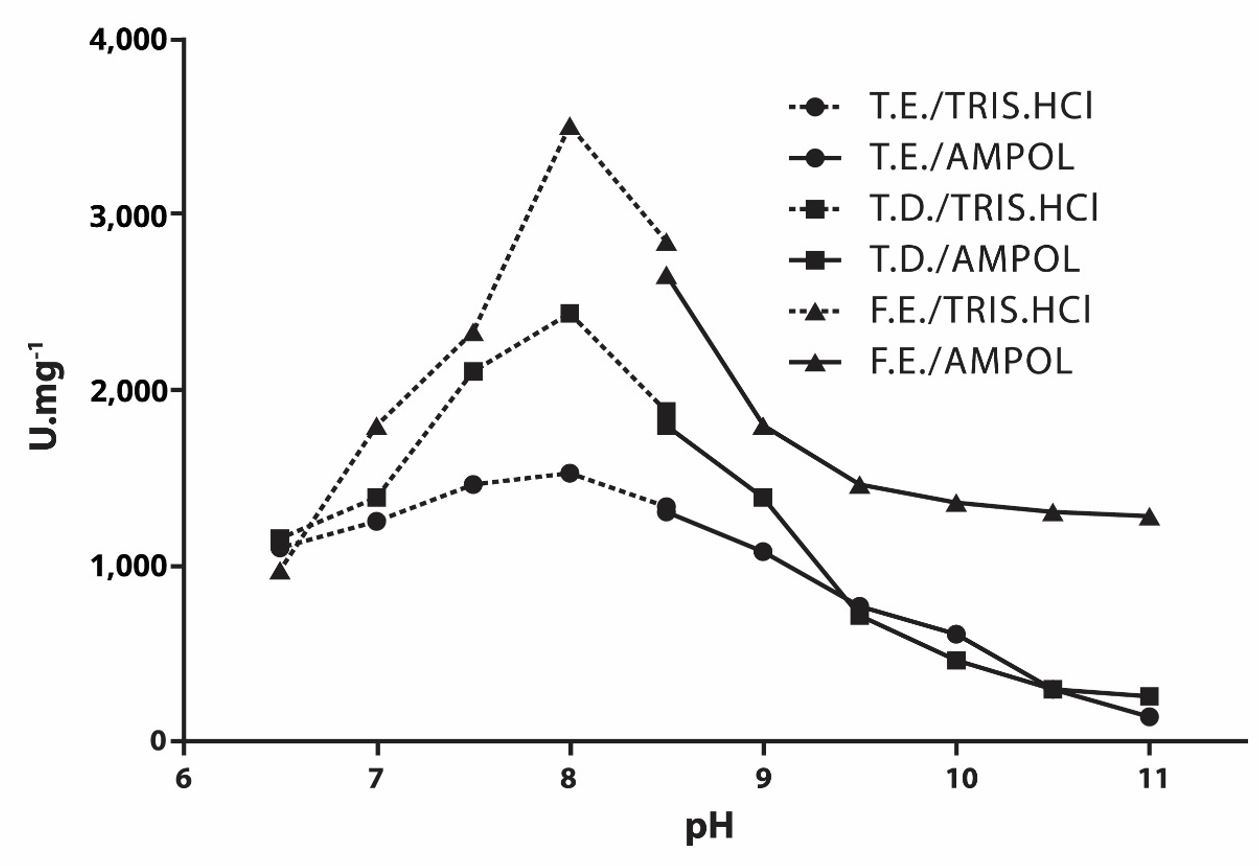Abstract
In order to better understand the ossification processes in anurans our study was carried out on tadpoles and adults of Lithobates catesbeianus. In this sense, we characterized the kinetic properties of alkaline phosphatase with p-nitrophenylphosphatase (pNPP) and pyrophosphate (PPi) and evaluated the activities of tartrate-resistant acid phosphatase and acid phosphatase. The enzyme extracts were obtained from tadpoles and adult femurs, which were divided into epiphysis and diaphysis. After homogenization, the samples were submitted to differential centrifugation to obtain cell membranes and, further, to phospholipase C (PIPLC) treatment, to remove membrane-bound proteins anchored by phosphatidylinositol. The average of specific activity for pNPP hydrolysis (at pH 10.5) by alkaline phosphatase released by phosphatidylinositol-specific phospholipase C (PIPLC) from Bacillus cereus among different bone regions at different animal ages was 1,142.57 U.mg-1, while for PPi hydrolysis (at pH 8.0), it was 1,433.82 U.mg-1. Among the compounds tested for enzymatic activity, the one that influenced the most was EDTA, with approximately 67% of inhibition for pNPPase activity and 77% for PPase activity. In the case of kinetic parameters, the enzyme showed a “Michaelian” behavior for pNPP and PPi hydrolysis. The Km value was around 0.6mM for pNPPase activity and ranged from 0.01 to 0.11mM for PPase activity, indicating that the enzyme has a higher affinity for this substrate. The study of pNPP and PPi hydrolysis by the enzyme revealed that the optimum pH of actuation for pNPP was 10.5, while for PPi, which is considered the true substrate of alkaline phosphatase, was 8.0, close to the physiological value. The results show that regardless of the ossification type that occurs, the same enzyme or isoenzymes act on the different bone regions and different life stages of anurans. The similarity of the results of studies with other vertebrates shows that anurans can be considered excellent animal models for the study of biological calcification.
Keywords:
anura; biological calcification; metamorphosis; phosphatases; kinect characterization

 Thumbnail
Thumbnail
 Thumbnail
Thumbnail

